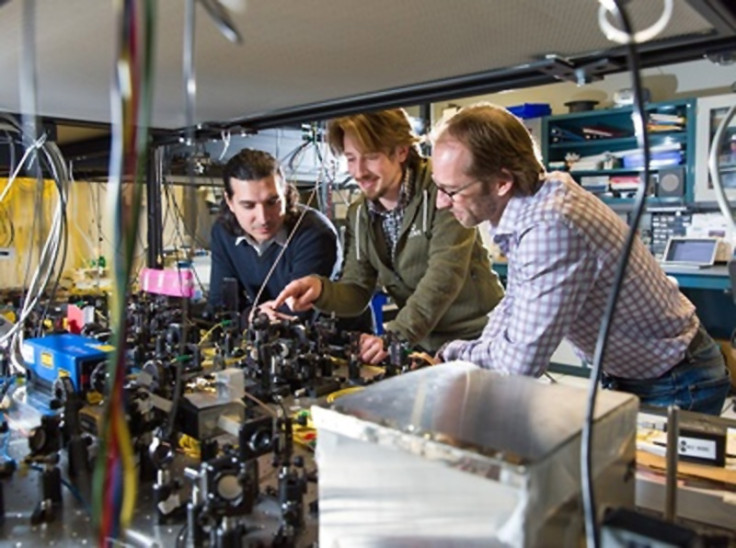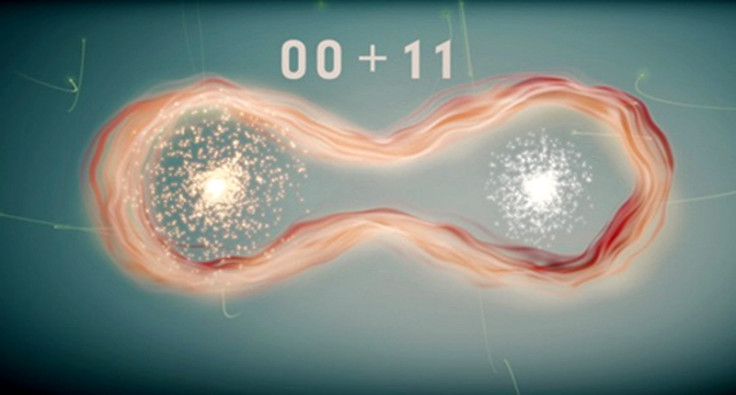Scientists one step closer to the future of the internet by teleporting light across 6km
Physicists have set a new world record in distance of transferring a quantum state by teleportation over 6km.

Canadian scientists have set a new world record by succeeding in teleporting a particle of light over a distance of 6km (3.7 miles) via fibre optics, which is a big step towards one day building a super-fast quantum internet.
It's not really teleportation in the sense of the Star Trek transporter but researchers from the University of Calgary have succeeded in teleporting a photon (light particle) from one location to another on the city's fibre-optic cable infrastructure. In doing so, it will be the most impressive distance ever achieved for transferring a quantum state by teleportation.
It means one day it will be possible to set up networks that are super secure – whereby communications cannot be eavesdropped on – and quantum computers can be connected to each other even when located across vast distances.
The paper, entitled 'Quantum teleportation across a metropolitan fibre network' is published in the journal Nature Photonics.
Quantum entanglement
The teleportation was made possible due to quantum entanglement, a phenomenon so mysterious that even Einstein couldn't understand it. This is the process where seemingly counterintuitive matter instantly affects each each other, for example, the measurement of one particle on Earth instantly affecting another particle at the opposite end of the universe.
"Being entangled means that the two photons that form an entangled pair have properties that are linked regardless of how far the two are separated," said Dr Wolfgang Tittel, a professor in the Department of Physics and Astronomy at the University of Calgary, who led the research.
"When one of the photons was sent over to City Hall, it remained entangled with the photon that stayed at the University of Calgary."

The next part of the experiment involved taking the photon at the University of Calgary and teleporting it to yet another location in the city along the fibre optics network. When it got there, the photon then teleported to join the other photon in the entangled pair, which was stationed at City Hall.
Experiment made use of dark fibre
The experiment was made possible due to a technology called dark fibre, which is a single optical cable that has no electronics or network equipment on the alignment. Dark fibre is typically network infrastructure that is not in use because there is already more than enough data capacity on the network.
Because these fibre-optic cables are not needed, owners of the network infrastructure typically lease dark fibre to clients who use it to make privately-operated optical fibre networks.
As changes in outdoor temperature cause transmission time of photons to lengthen and vary, the researchers found the teleportation only worked if they were able to get the photons to arrive and meet each other within 10 pico-seconds (one trillionth of a second).

Making super-fast quantum internet possible
The demonstration of teleporting light particles is both a key way to demonstrate quantum mechanics, and the researchers see it as yet another step towards making quantum internet a reality.
There is currently a great deal of interest in developing super-fast internet networks whereby data is stored in light particles rather than chips or bits by manipulating light into optical networking, however the technology is currently very complicated.
Nevertheless, researchers from University of Bristol believe that an open source internet where light travels at the speed of light is possible and could open up the global network infrastructure industry.
© Copyright IBTimes 2025. All rights reserved.






















